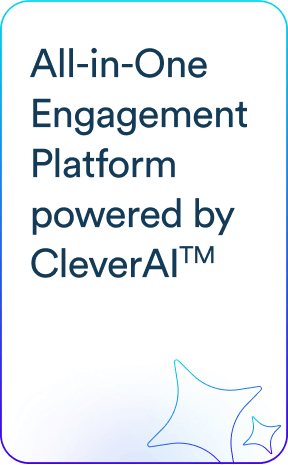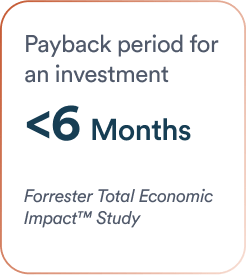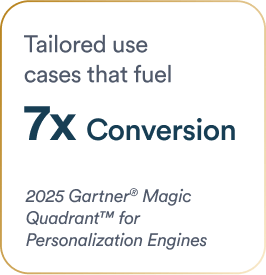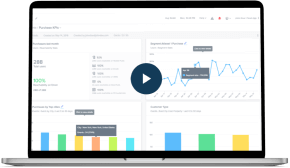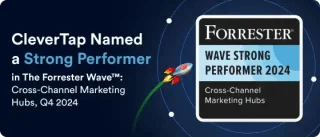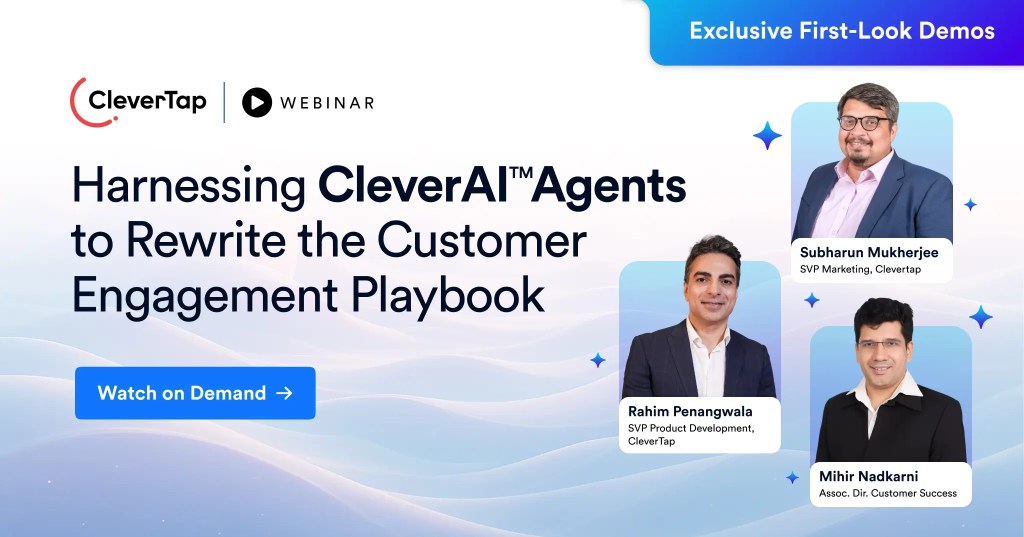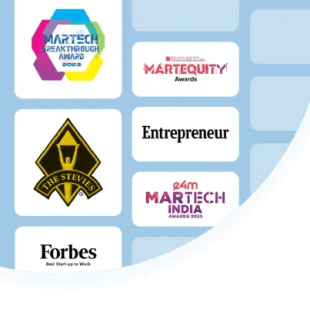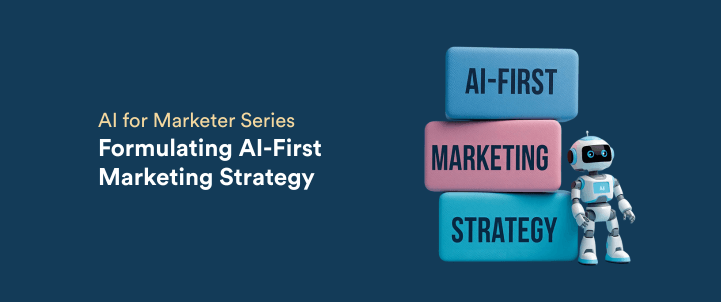Marketing leaders today face a paradox: expectations for growth are higher than ever, but budgets remain flat. Gartner’s 2025 CMO survey reported marketing budgets are holding steady at 7.7% of company revenue – unchanged from last year, despite rising customer acquisition costs and channel fragmentation.
The good news? While marketers are expected to do more with less, AI has leapt from fringe experimentation to boardroom mandate for organization-wide adoption. And, marketing undoubtedly is one of the key company functions that is being completely disrupted by AI.
The brands that will thrive tomorrow are those that act today. They must become AI-first organizations, embedding intelligence at the core of their marketing strategies.
So, what does “AI-first marketing” really mean? Let’s explore.
What “AI-First Marketing” Really Means
AI-first marketing is often misunderstood as simply procuring more tools and considering them as the “go-to for everything”, from campaign ideation and planning to execution. In reality, it represents a paradigm shift in how marketing is conceived, executed, and scaled:
- AI as the default lens: Every marketing decision – whether about audiences, channels, timing, or creative – is filtered through AI models first, not as an afterthought.
- Beyond personalization: AI-first marketing doesn’t just tailor messages; it shapes entire customer journeys that are real-time, interactive, immersive, individually adaptive, and context-aware.
- Continuous adaptability: Instead of adapting strategies or course-correcting on a monthly or quarterly basis, they evolve in real time, almost hourly, based on customer signals, market shifts, and contextual insights.
- Autonomous decision-making: Instead of marketers micromanaging every touchpoint, AI agents autonomously decide the next best action, creating bandwidth for marketing teams to focus on innovation and brand storytelling.
- Human-AI partnership: Far from replacing creativity, AI-first marketing enhances it, giving marketers deeper insights, faster iteration cycles, and the ability to experiment at scale.
In essence, AI-first marketing is not about doing the same things faster with AI; it’s about doing fundamentally new and different things at a scale that would be impossible without AI.
Prerequisites for Building an AI-First Marketing Strategy
An AI-first marketing strategy cannot succeed if the groundwork isn’t solid. These six prerequisites set the stage for intelligent, adaptive, and autonomous marketing:
1. Trusted Data Infrastructure
Building a reliable data foundation is the first non-negotiable step. Marketers must:
- Break down silos across CRM, analytics, campaign management, and customer service platforms to build a single source of truth and unified view of the customer.
- Invest in real-time data ingestion that feeds AI models with fresh behavioral signals, contextual metadata, and cross-channel activity, enabling them to respond instantly.
- Deduplicate, cleanse, and enrich data so models learn from the right inputs and then let agents manage the processes of data sanctity and governance, with human oversight.
- Prioritize privacy and compliance, ensuring that all data handling meets evolving global standards like GDPR and CCPA, while being transparent about data usage.
2. AI-Enabled Marketers
Technology is only as powerful as the people who wield it. Marketers must be trained/skilled, equipped, and empowered to work in AI-first environments. Decision-makers and marketing leaders need to:
- Build literacy around AI concepts and applications such as decisioning engines, autonomous agents, trust levels, and explainability.
- Shift roles from manual campaign execution to strategy, oversight, and creative problem-solving.
- Encourage collaboration between marketers, product teams, data scientists, and engineers, creating cross-functional fluency.
3. Clarity on Human vs. AI Roles
Not everything should be automated or AI-driven. Brands need a clear framework for what AI should do and where humans must stay in control. They must establish guardrails so AI agents work within strategic and brand-aligned boundaries.
- AI-led: Real-time decisioning, personalization, optimization at scale.
- Human-led: Brand storytelling, ethical oversight, emotional resonance, creative innovation.
4. Defined Use Cases and Priorities
AI is not a silver bullet that will fix all your problems. Organizations often fail when they try to “AI everything” at once. Instead, they should:
- Identify high-impact areas, such as churn prediction, real-time personalization, and campaign optimization.
- Start with quick wins to build confidence and demonstrate ROI.
- Create a roadmap for scaling into more complex use cases like autonomous retention agents or multi-channel orchestration.
5. Culture of Experimentation and Agility
AI-first marketing is not a “set-and-forget” model. It thrives in continuous learning environments that value iteration over perfection. To harness its full potential, organizations need:
- A mindset shift from long, rigid planning cycles to continuous experimentation, testing new messaging, formats, and emotional hooks that resonate with evolving customer mindsets.
- Agility to pivot based on feedback, leveraging AI signals to refine strategies before small issues become major misalignments.
- Processes that allow creative teams to collaborate with AI, blending human imagination with machine precision.
The goal is to create a flywheel of innovation where AI-driven automation handles optimization, and human creativity drives differentiation. Organizations that embrace this culture move from risk-averse planning to agile innovation at scale.
6. Trust and Governance Framework
Finally, AI-first marketing can only succeed if both internal stakeholders (marketing, legal, compliance, operations, and other teams) and external stakeholders (customers) trust the system.
- Implement explainability tools so marketers can understand and justify AI decisions.
- Set up governance structures for bias detection, fairness, and ethical usage.
- Build transparency into customer experiences, showing them how personalization adds value, not intrusion, and giving them clarity, control, and choices around their data.
Mapping AI-First Strategy Across the Marketing Lifecycle
The application of AI in marketing spans the entire value chain, from insight generation to lifecycle management. By embedding AI into each stage, marketers can create a connected, intelligent, and adaptive system that evolves with both customer needs and business priorities.
1. Insight & Strategy
AI enables brands to listen at scale. By mining vast amounts of Voice of Customer (VoC) data from surveys, reviews, social, and other channels, it surfaces themes and sentiment shifts that would otherwise go unnoticed.
It also helps refresh Ideal Customer Profile (ICP) definitions by identifying the attributes (firmographic, behavioral, intent-based) that truly drive conversions or long-term retention. And when it comes to understanding the size of the opportunity, AI-powered models make total addressable market (TAM) sizing more dynamic, uncovering emerging segments that static analysis often misses.
2. Planning
AI shifts marketers from being reactive to proactive:
- Predictive budget allocation: AI models recommend where each dollar will drive the highest ROI across channels.
- Scenario planning: AI simulates outcomes under different market conditions, giving marketers foresight into risks and opportunities before they materialize.
- Marketing mix modeling (MMM): MMM, long considered slow and retrospective, when powered by AI, integrates both online and offline data in real time for more accurate insights into attribution and ROI.
3. Creation
Intelligent systems accelerate the production process without replacing human creativity. Intelligent systems can generate campaign briefs based on historical performance and competitor activity, draft copy that aligns with brand tone, and even produce multiple design variations for testing. Instead of starting from scratch, creative teams are empowered to focus on refinement, storytelling, and emotional resonance – the areas where human ingenuity has no substitute.
4. Activation
The activation stage is where AI ensures precision in execution. Dynamic segmentation allows audiences to be grouped not just by demographics, but by live behavioral signals, enabling far more relevant targeting. Real-time actionable insights help optimize spending on media bidding auctions, while channel optimization ensures each message is delivered through the right mix of platforms for maximum impact. The result is smarter activation that reduces waste and increases engagement.
5. Lifecycle & CRM
AI shifts lifecycle marketing from reactive management to proactive engagement. Predictive models flag churn risk before it becomes visible, allowing for timely intervention. Decisioning engines like CleverAI determine the next best action for each customer in real time, whether that’s a personalized offer, an upsell recommendation, or a retention incentive.
AI also powers advanced lead scoring, helping sales teams prioritize the prospects most likely to convert. Together, these capabilities ensure that customer relationships are continuously nurtured with intelligence and care.
The AI‑First Imperative
The era of AI-first marketing is here. Leaders who treat AI as a set of tools will see limited gains. Leaders who redesign their operating models – anchoring in data, embedding models into workflows, enforcing governance, and measuring outcomes – will compound growth.
By embedding CleverAI’s decisioning engine and agentic universe at the core of your strategies, you can move beyond campaigns to create living, adaptive ecosystems of customer engagement.
This shift doesn’t just make marketing smarter – it makes it more human, delivering meaningful, timely, and personalized experiences at scale.
Subharun Mukherjee 
Heads Cross-Functional Marketing.Expert in SaaS Product Marketing, CX & GTM strategies.
Free Customer Engagement Guides
Join our newsletter for actionable tips and proven strategies to grow your business and engage your customers.

